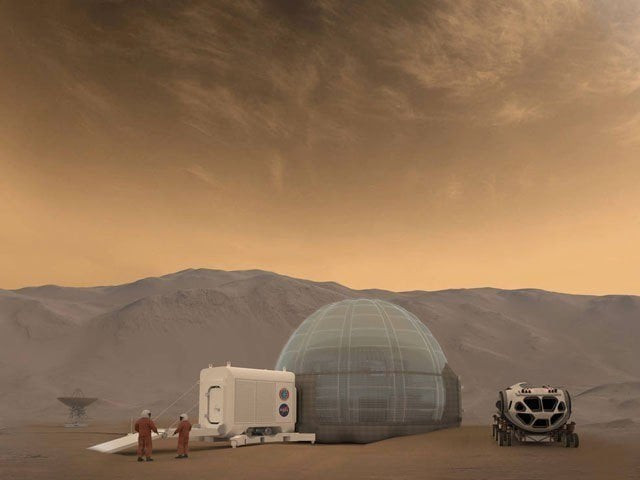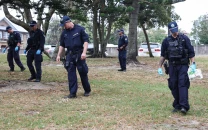Mars' surface hardened quickly, boosting odds of life: study
Mars, once much more Earth-like, with a thick atmosphere, abundant water, solidification has taken 100 million years

NASA unveils new concept for living on Mars. PHOTO: NASA
Analysing grains of the mineral zircon extracted from a Martian meteorite known as Black Beauty, they determined that the Red Planet's outer layer hardened 4.547 billion years ago, only 20 million years after the birth of the Sun.
"Mars's primary crust formation which is the end product of planet formation happened much faster than previously thought," said Martin Bizzarro, a scientist at Denmark's Centre for Star and Planet Formation and senior author of a study published in Nature.
"Our results indicate that Mars could have had an environment with oceans, and potentially life, much earlier than Earth,".
More building blocks of life found on Mars
Water is considered to be an essential precursor for life, at least as we know it.
Mars was once much more Earth-like, with a thick atmosphere, abundant water and global oceans.
Up to now, mathematical models have suggested that the solidification of the Red Planet took up to 100 million years.
The new study tackles the question by examining a chunk of Mars that streaked into the Saharan Desert and was discovered in 2011.
The Black Beauty meteorite weighed 320 grammes (11 ounces) when found. The researchers secured 44 grammes of the precious space rock, and crushed five enough to extract seven bits of zircon that could be used in experiments.
By measuring the lead decaying from uranium that had been trapped in zircon as the young Mars's molten magma hardened, the scientists were able to precisely date the crust from which the zircon formed.
"I'm glad we chose that strategy," said Bizzarro. "Zircon is like a time capsule."
There are two main models for the formation of planets.
In one, it occurs in stages, with small dust particles coalescing into "planetesimals" rock fragments ten to 100 kilometres in diameter that collide to form planetary embryos, and then planets, over a time scale of 50 to 100 million years.
According to a more recent model, planetary growth unfolds more quickly and is fuelled by so-called "pebble accretion", the layered accumulation of particles measured in centimetres and metres that are loosely bound with gases.
"Our data supports newer models indicating the very rapid formation of terrestrial planets," the authors said.
NASA counts down to liftoff of Mars lander, InSight
The new timeline suggests that something similar may have happened on our planet, but only after Earth was "reset" by the giant impact that formed the Moon about 4.4 billion years ago, Bizzarro said.
Mars is thought to have a dense metallic core with a radius of about 1,800 kilometres (1,100 miles), consisting primarily of iron, nickel and sulphur.
The core is surrounded by a largely dormant mantle some 1,500 km thick made mainly of silicon, oxygen, iron and magnesium.
Finally, the crust averages about 50 km in depth, with a maximum of about 125 km. Earth's crust averages 40 km, but is one-third the thickness of the Martian crust once planet size is taken into account.



















COMMENTS
Comments are moderated and generally will be posted if they are on-topic and not abusive.
For more information, please see our Comments FAQ